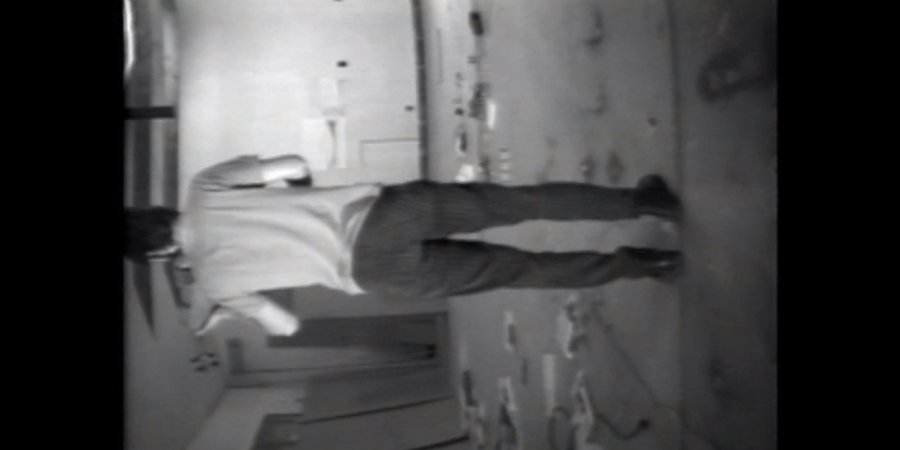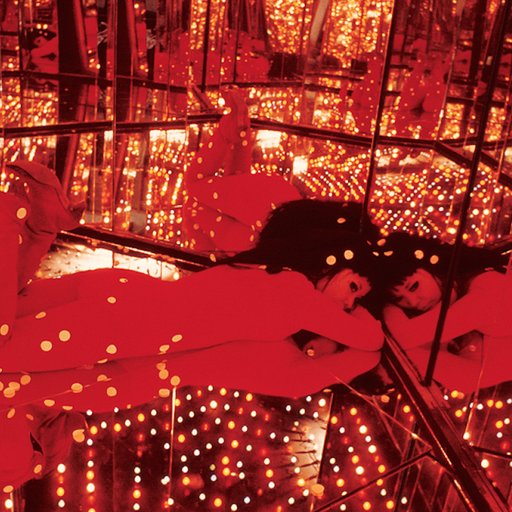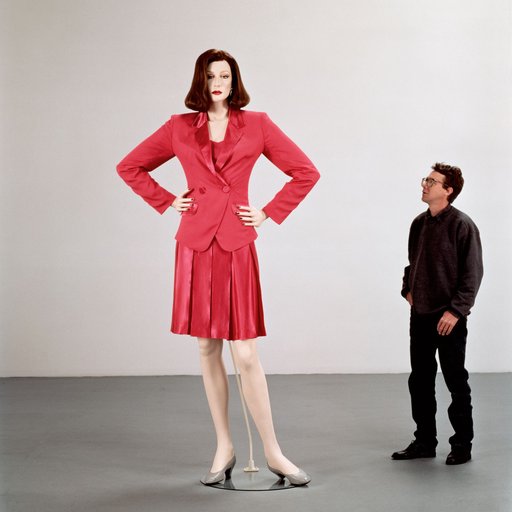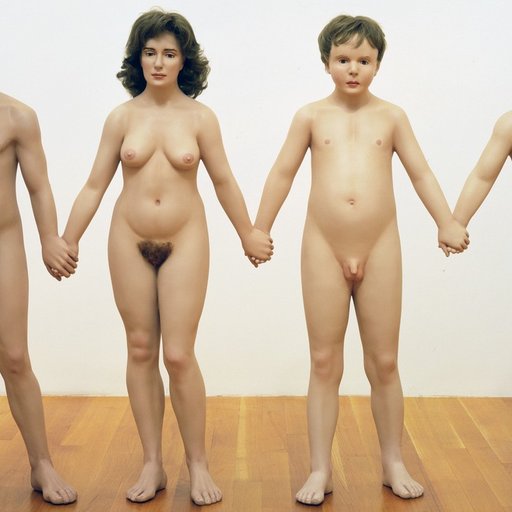With a large-scale retrospective at MoMA and Basel's Schaulager recently announced for 2018, and a show of his works over the past 30 years at Gagosian’s Paris location currently underway, the celebrated American artist Bruce Nauman is clearly receiving the institutional great-man treatment these days. It's well deserved, too. The prolific artist’s work in video, neon, sculpture, and more have set the tone for much of the art that has come in its wake—making Nauman unquestionably one of the most influential living artists. Though born in Indiana and currently residing in Northern New Mexico, Nauman is often considered to be a Californian artist due to the amount of work he produced there following his now-legendary time as a graduate student at U.C. Davis. As the art critic and historian Peter Plagens reminds us in this excerpt from Phaidon’s Bruce Nauman: The True Artist, however, Nauman nevertheless managed to leave his mark on the New York art scene of the 1960s with his gamechanging performance videos. Here is a little-known but important chapter from the artist's bravura career.
David Whitney, who worked for Leo Castelli in his gallery in New York, came to L.A. in 1966 on one of his periodic West Coast trips. Nick Wilder told him to get himself up to Davis, California, to see the work of an interesting, if puzzling, young artist named Bruce Nauman. Whitney visited Nauman, saw some of his work, but voiced concerns about how Nauman’s pieces did not look at all like finished works of art, and about how flimsily they seemed to be made. Nevertheless, he marked him out as an artist whom Castelli should seriously consider. And the gallerist did just that after seeing the group show that Richard Bellamy put together in Noah Goldowsky’s gallery during the summer of 1966, later claiming: “I had relatively little doubt about Nauman, because there was an element there that was very familiar to me – like in earlier Jasper Johns. It was a Duchampian element that I took to, that I like.”
Nauman made his first trip to New York in conjunction with the exhibition, but returned quickly to the Bay Area. In the autumn, however, he was awarded a National Endowment for the Arts individual artist’s fellowship for $10,000, and conspired to get himself a little closer to Manhattan. Paul Waldman – husband of Guggenheim Museum curator Diane Waldman; an odd horse in the Castelli stable; and a painstaking Surrealist in a minimalized Salvador Dali mode – had taught as a visiting artist at U.C. Davis, and, with Castelli’s star Pop artist Roy Lichtenstein, owned a house with a studio in East Hampton, out towards the end of Long Island. Since neither Waldman nor Lichtenstein planned to be in residence during the winter of 1968–9, they agreed to let Nauman rent it from them, with Judy and Erik coming along too.
Naturally, Nauman forayed into the city. And one of the first things that struck him about New York was that its art world was unashamedly opinionated:
"Wiley and the rest of the artists I knew in San Francisco were against judgment, against saying that this or that work of art was better than any other. It was Sol LeWitt who said to me, 'It’s OK to have an opinion. Just because you think this work of art isn’t as good as one by somebody else doesn’t mean that you think the artist who made it is a bad person.' After we went to a Jets [football] game in the cold, we went out to dinner at a Spanish restaurant. [The artist] Dorothea Rockburne came in with some other women artists, and they started talking to Sol from the next table about math and art. Sol was having none of what they were propounding, and it got into a real loud argument. Afterward, I said to Sol that the argument seemed a little scary. Sol said, 'What? That’s just New York art conversation.'"
During the previous three years, Nauman had been making his recorded “time-based” art in the form of about a dozen 16mm films, including Fishing for Asian Carp and the disorientating Revolving Landscape. Part of the house deal with Waldman and Lichtenstein was that Nauman was not to do anything to disturb the nice white walls in the studio. So instead of sculpture or drawings, he made ten hour-long videotapes.
Castelli had paid about $1,200 for some new SONY portable video gear, and Nauman got to use it first. Previously, he had made some films using a 16mm camera obtained at a pawnshop and some prepackaged three-minute reels of film. But the SONY videotape recorder gave him a one-hour capability, with the additional virtue of sound-on-tape. The videos he made were titled with his typical anti-romantic, anthropological straightforwardness – more like labeling of forensic evidence of something medical or criminal – Bouncing in the Corner No. 1, Bouncing in theCorner No. 2, Lip Sync, Revolving Upside Down, Pacing Upside Down, Stamping in the Studio, Slow Angle Walk (Beckett Walk), and Violin Tuned D.E.A.D., and reworkings of U.C. Davis works Wall-Floor Positions and Manipulating a Fluorescent Tube.
With the exception of Violin Tuned D.E.A.D., what all the works have in common is, as Nauman described it: “You have the repeated action, and at the same time, over a long period of time you have mistakes or at least chance, changes, and you get tired and all kinds of things happen, so there’s a certain tension that you can exploit once you begin to understand how those things function. And a lot of the videotapes were about that.” He could have been describing some of the action in several works by the Irish novelist and playwright Samuel Beckett, an author whom Nauman had recently been reading. In fact, Slow Angle Walk (Beckett Walk) conforms almost exactly to Beckett’s description of his character Watt, in the eponymous novel:
"Watt’s way of advancing due east, for example, was to turn his bust as far as possible towards the north and at the same time to fling out his right leg as far as possible towards the south, and then to turn his bust as far as possible towards the south and at the same time to fling out his left leg as far as possible towards the north, and then again to turn his bust as far as possible towards the north and to fling out his right leg as far as possible towards the south."
Much like Beckett, the young Nauman was tall and thin. Like Beckett, he was obsessed with the absurdity – “absurdity” as in “what on Earth to make of it?” rather than as slapstick comedy – of ultimately solitary human existence, the recognition that you’re born alone, die alone, and in between are absolutely mystified by the experience of being here. And like Beckett, Nauman was compelled to exteriorize these troubling thoughts by creating works of art. Nauman, who was not primarily a writer but a visual artist, chose actions recorded on videotape rather than words written on a page to get his point across. Compare, for example, the “sucking stones” passage from Beckett’s novel Molloy, quoted in a footnote in full because both its cadence and content parallel Nauman’s way of artistic thinking, which is to take the long road through a paradox.
The descriptions in the catalogue of Electronic Arts Intermix, the New York distributor of Nauman’s works on video, of two other tapes that Nauman made that winter cannot be improved upon by the author. Lip Sync: “An upside-down close-up of the artist’s mouth, Nauman repeats the words ‘lip sync’ as the audio track shifts in and out of sync with the video. The disjunction between what is seen and heard keeps the viewer on edge, struggling to attach the sound of the words with the off-kilter movements of Nauman’s mouth.” (The two words start to couple in reverse, and it soon seems as if Nauman is actually saying, “Sync lip.”) And Revolving Upside Down: “The inverted camera catches Nauman standing at the end of the room, slowly spinning around on one foot, first head down in one direction, then head up in the other direction. The tape seems to be as much a trial of Nauman’s endurance as an exercise in becoming a human machine, some type of cog or mechanized weather vane.” Of course, the connection in the latter videotape to Molloy is explicit and intentional. As Nauman himself says in the catalogue, “I wanted the tension of waiting for something to happen, and then you should just get drawn into the rhythm of the thing. The passage in Beckett’s Molloy about transferring stones from one place to another, in the pockets of an overcoat, without getting them mixed up, is elaborate without any point.” I have the temerity, however, to disagree with my subject here; there is a point to both his work and to Beckett’s, which is that they articulate the solitariness and futility of human existence.
Watching Nauman’s early videos is an odd experience. Seeing them, as I did on several occasions back in the day, in a gallery context, you become terribly conscious of two questions: first, “This is art?” and second, “What is my body doing standing here?” Although Nauman wasn’t the first to use video as a serious art medium (that honor is usually given to the Korean artist, Nam June Paik, who made art with the new SONY Portapak equipment as early as 1965), he employed it early enough for his work to profit – and suffer – from the unfamiliarity of the medium. In the mid- and late 1960s, contemporary art galleries were filled with big, abstract Color Field paintings and physically formidable Minimal sculpture. The products of video art, by contrast, were monochromatic, grainy and displayed on the homely little monitors then available – and either required galleries to be darkened substantially or were washed pale by the room’s intense track lighting. What many called the “Wow! experience” of the big, bright, bombastic contemporary art of the time was missing with video. On the other hand, video art wasn’t TV, either. No ordinary citizen would relax on a couch at home, open a beer and a bag of potato chips, and sit back to watch an entire, stationary-camera hour of Bruce Nauman revolving, stamping, bouncing or lip-synching in black and white. And nor would people have been likely to file into a theatre to watch the same thing projected on a large screen, even if the technology had existed at the time.
Whether watched at home or in a theatre, Nauman’s videos still wreak havoc with the conventional idea of a narrative arc. Most of us are almost incurably conditioned to expect it from anything moving on a screen, and this expectation was even stronger forty years ago. It wasn’t as if Nauman totally negated narrative, although he was averse to the idea of making ‘movies’. Watching his growing fatigue in these videos, as well as the shifting camera angles that give the impression he is walking on a wall or the ceiling (in Slow Angle Walk (Beckett Walk) and the out-of whack sound and image in Lip Sync, is an experience of almost Hitchcockian suspense: how will it turn out? Will Nauman collapse? Will the tape descend into total incoherence? In short, the tapes aren’t like stationary paintings and sculpture that you can dip in and out of and will remain exactly the same upon each revisit. It was therefore extremely difficult for even art-hardened observers to stand still in the gallery and, as with a Hollywood feature film, remain until the end.
That challenge was as much physiological as it was mental (i.e., trying to fend off boredom). Standing on an art gallery’s hardwood floor (the norm in vertical New York) or concrete floor (common in horizontal, cellarless Los Angeles) in order to look at a single work of art – “abstract” art, in the sense that it manipulated basic human actions like an abstract painter manipulates shapes – for more than a minute or two was physically taxing. The stiffness waxing into an ache that you started to feel made you conscious of your own body and its limitations; that consciousness, in turn, made you even more aware of Nauman’s efforts, which, in turn, made you yet more aware of your own discomforts. You became, by dint of a concentration no longer necessary with today’s razor-sharp, full-color and almost blindingly bright luminosity, indirectly complicit in Nauman’s videos. You became, in other words, a semiparticipant, caught on an uncomfortable edge between seeing and doing, between witnessing and facilitating. That “catching” of the viewer, and dragging him or her into a disconcerting conspiracy with the work of art has been a pervading, if varied, feature of Nauman’s work from his U.C. Davis days right up to the present.
Although Nauman would continue to live in California until 1979, and be regarded by many critics as a “California artist” with a California Funk sensibility, his 1968 exhibition at Castelli and his subsequent sojourn in New York marked the point at which that perception veered into emphatic error. But for all the unvarnished, “tough” works of art that Nauman made, he never became a “New York artist”, either. He never lived in New York until, later in his career, he acquired a pied-a-terre for the necessary extended stays involving exhibitions and major projects. And he left the Bay Area before its own ultra-serious and formidable Conceptual movement rose to challenge the mellowed-out ideas of Wiley and his ever-growing school.
Nauman knew about Bay Area Conceptual artists, but fairly peripherally. He says, “I knew Tom Marioni some, had met Howard Fried, and was around some of their performances. And I think I saw something with Terry Fox, but didn’t know Paul Kos.” In Brenda Richardson’s view:
"[Nauman had] little commonality with Fox, Fried, Marioni. Terry was into European-style performance art and testing the boundaries of his own physical limits. (There’s some of that in Bruce’s work, of course, but I think it comes from a different place. Notably, Bruce brought a broad sense of humor to his work – as did Wiley – another reason they bonded. Terry had zero sense of humor)… Howard Fried was as ‘mental’ as any artist I’ve ever known. Strictly in his head. No humor. Not about physical limits. Strictly about intellectual exercise. No concern for ‘the object’. I can’t see any meaningful connection between his work and Bruce’s."
If Nauman wasn’t a Bay Area Funk artist merely seeing if an East Coast working ambience suited him, if he wasn’t a card-carrying New York Postminimalist like Keith Sonnier – as in his Wall-Cloth Piece of 1968 – or a ‘process artist’ in the vein of Lynda Benglis’s poured-foam sculptures – Night Sherbet A of 1968 for instance – and if he wasn’t a strict and dry Conceptualist along the lines of Lawrence Weiner (the 1968 statement-work, An Amount of Paint Poured Directly upon the Floor and Allowed to Dry, for example, then what was he? The artist stylistically – if such an appearances-orientated word can indeed be used here – closest to him at that point was probably the greatest American sculptor of the last third of the twentieth century (and ongoing), Richard Serra. He, too, was (and is) rather uncategorizable. At the time Nauman was taking his sojourn in New York, Serra was producing his molten-lead ‘splash’ pieces (which have a kinetic residue not unlike Nauman’s Holes the Size of My Waist and Wrists sculpture of 1966), and a film, similar to Nauman’s New York videos in its Beckett-like – even Sisyphus-like – ‘pointlessness’, Hand Catching Lead (1968). But where Serra’s aesthetic soon coalesced into a predominant concern with keeping abstract sculpture alive and breathing in the wake of Minimalism’s blanketing frost, Nauman maintained his serious-gadfly methods. In short, while most other artists seemed to be “different” by means of programmed and focused aberration from what had recently gone before, Nauman managed to remain unique because he was persistently and consistently questioning his work, laying bare the fact that he just hadn’t figured things out yet. The disarming glory of his whole oeuvre is, in fact, its continuous admission that its author has never figured anything out for keeps.



























